Lose 30 Pounds in 60 Days with These 5 Simple Plyometric Moves

When combined with an active lifestyle and a healthy diet, plyometric exercises can really add to your health and fitness and help you lose weight. "There are a lot of benefits to adding plyometric moves to your workouts, including improved strength, explosiveness, speed, agility, and power," exercise physiologist Matthew Accetta tells HSS. "People see others trying it on Instagram or in the gym and think, that person looks like they're working hard. I want to try it, too." Here are plyometric moves for beginners that will kickstart your weight loss regimen and help you burn fat and get fit.
Side Jumps

Here's how to do side jumps:
"Stand tall with your feet together," says Matthew Solan via Harvard Health. "Shift your weight onto your right foot and leap as far as possible to your left, landing with your left foot followed by your right one. Repeat, hopping to your right. That's one rep.
- You can hold your arms in front of you or let them swing naturally.
- Try not to hunch or round your shoulders forward as you jump.
- To make this exercise easier, hop a shorter distance to the side and stay closer to the floor.
Do five to 15 reps to complete one set. Do one to three sets, resting between each set."
Lateral Bounds
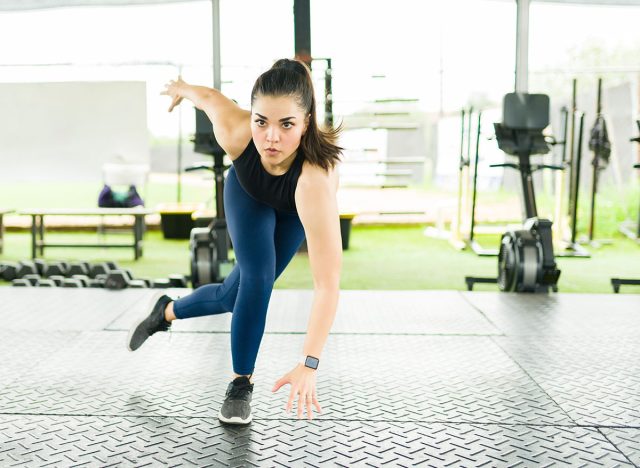
Try lateral bounds:
"Stand tall with feet together," fitness instructor Elizabeth Andrews tells Ace Fitness. "Jump laterally to the right as the arms come forward. Land on the right foot as the arms come toward the sides of the body; bring the left foot together with the right and repeat."
Squat Jumps

Squat jumps are good for beginners:
"Stand tall with the feet shoulder-distance apart," Andrews tells Ace Fitness. "Lower the body into a squat position; pull the elbows back and use the arms to explosively burst or jump up. Reach the arms overhead as the feet leave the floor. Land softly, lower the body and repeat the jumping motion."
RELATED: 15 Simple Exercises to Get You in Shape Over 50 in Just 4 Weeks
Jump Rope
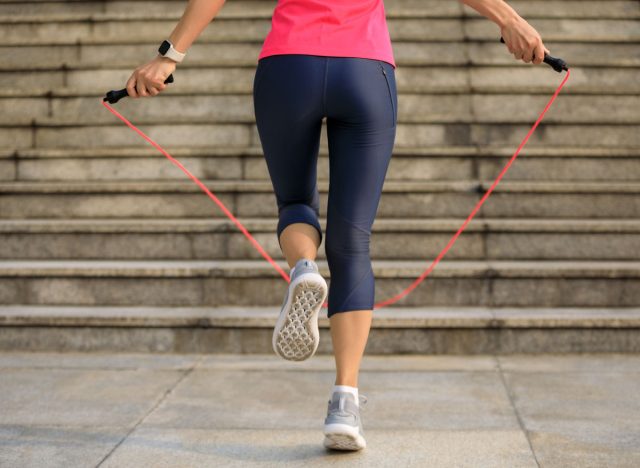
Jump rope is great for beginners, too:
"Jumping rope is an effective plyometric exercise because it emphasizes short, quick ground contact time," says Solan via Harvard Health. "It also measures the coordination and repeated jump height as you clear the rope.
- Begin with two minutes of jumping rope, then increase the time or add extra sets.
- Break it up into 10- to 30-second segments if two minutes is too difficult.
- If your feet get tangled, pause until you regain your balance, and then continue.
An easier option is to go through the motions of jumping rope but without the rope."
Forward Hops
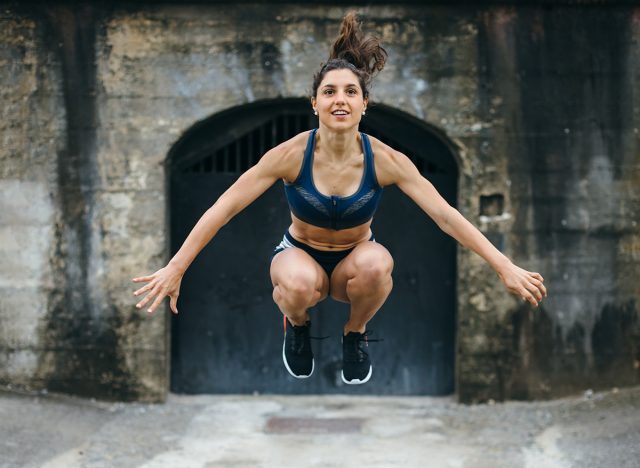
Try forward hops:
"Stand tall with your feet together," says Solan via Harvard Health. "Bend your knees and jump forward one to two feet. Turn your body around and jump back to the starting position to complete one rep.
- Let your arms swing naturally during the hop.
- To make this exercise easier, hop a shorter distance and stay closer to the floor.
- If you want more of a challenge, hop farther and higher. As this becomes easier to do, try hopping over small hurdles. Begin with something like a stick and then increase the height, such as with books of various thicknesses.
Do five to 10 hops to complete one set. Do one to three sets, resting between each set."
Golf and Tennis

Try golf and tennis to make plyometric exercises fun. "You may not think golf or tennis as an explosive sport, but swinging that club or racket and trying to get maximal force onto the ball is an explosive movement," Accetta tells HSS. "If you're a runner trying to pick up your mile time, plyometrics can help. It's also useful in basketball, football—all the sports where you need to do something quick and powerful in a short period of time."
Prevent Injuries
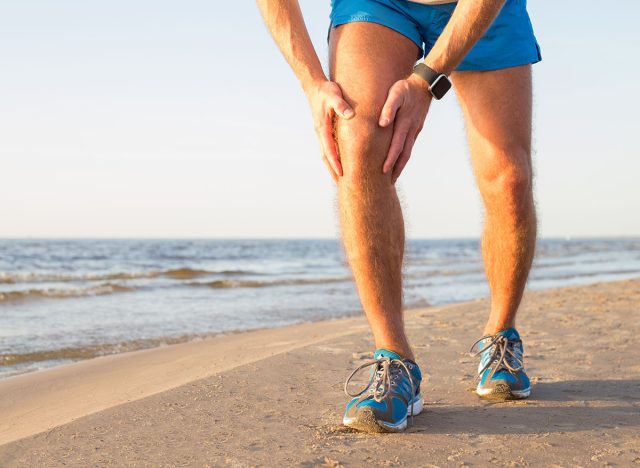
Experts recommend choosing a surface that isn't rock-hard. Grass, dirt, or a padded floor are ideal to prevent injuries. Avoid doing exercises on concrete.
RELATED: I Lost 20 Pounds with the 12-3-30 "Advanced" Walking Workout
Talk To A Doctor

As with any new exercise, make sure you speak to a health professional if you have any issues. Be careful if you have joint issues, and never push more than you can physically tolerate. Take your time and build up your strength.
Training For Athletes
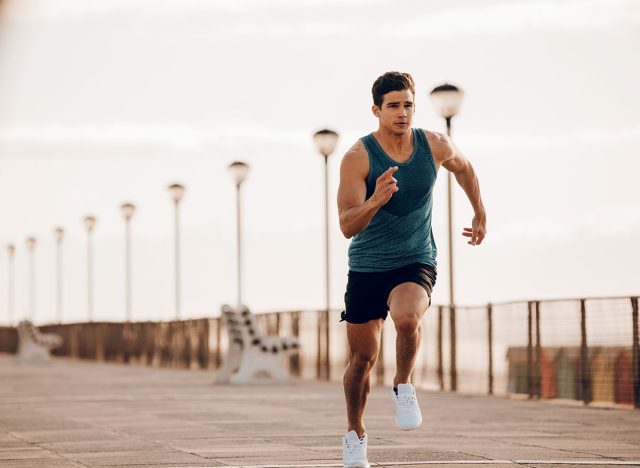
Plyometrics moves are a great way for athletes to train. "Plyometrics are used by competitive athletes who rely on quick, powerful movements, like those in basketball, volleyball, baseball, tennis, and track and field," Thomas Newman, a lead performance specialist with Harvard-affiliated Mass General Brigham Center for Sports Performance and Research, tells Harvard Health.
RELATED: 25 Essential Ways to Banish Abdominal Fat in 90 Days
Start With Plyometrics
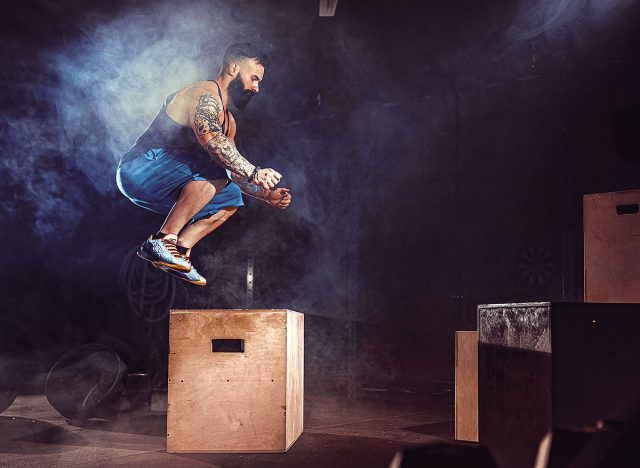
Try to do plyometrics at the beginning of a workout. "Because they're the most explosive, fatiguing, draining exercises, you want to make sure that you're fresh when you're doing them," Accetta tells HSS. "That way you can get the most out of them and still reduce your likelihood of injury. And if you enjoyed this article, don't miss 12-3-30 Walking Method: 20 Proven Tips to Lose Weight Faster.




